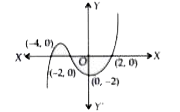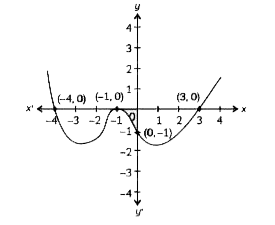If the graph would be parallel to x-axis, the its number of zeros for the graph would be:
0
1
more than 1
2
To determine the number of zeros for a graph that is parallel to the x-axis, we can follow these steps:
Step 1: Understand the Graph Orientation
A graph that is parallel to the x-axis means that it is a horizontal line. This line does not rise or fall as you move along the x-axis.
Hint: Remember that a horizontal line has the same y-value for all x-values.
Step 2: Identify the Equation of the Line
The equation of a line that is parallel to the x-axis can be expressed as y=c, where c is a constant. This means that for every value of x, the value of y remains constant.
Hint: Think about what it means for a line to be horizontal; it does not intersect the x-axis unless c=0.
Step 3: Determine Intersections with the x-axis
The zeros of a function (or the graph) are the x-values where the graph intersects the x-axis. For a horizontal line y=c:
- If c=0, the line is on the x-axis, and it intersects at all points along the x-axis, which means it has infinitely many zeros.
- If c≠0, the line does not touch or intersect the x-axis at all, meaning it has zero zeros.
Hint: Consider the implications of the line's position relative to the x-axis.
Step 4: Conclusion
For a graph that is parallel to the x-axis:
- If the line is above or below the x-axis (i.e., c≠0), the number of zeros is 0.
- If the line is exactly on the x-axis (i.e., c=0), the number of zeros is infinite.
In this case, since the question asks for a graph that is parallel to the x-axis without specifying that it is on the x-axis, we conclude that the number of zeros is 0.
Final Answer: The number of zeros for the graph that is parallel to the x-axis is 0.
A graph that is parallel to the x-axis means that it is a horizontal line. This line does not rise or fall as you move along the x-axis.
The equation of a line that is parallel to the x-axis can be expressed as y=c, where c is a constant. This means that for every value of x, the value of y remains constant.
The zeros of a function (or the graph) are the x-values where the graph intersects the x-axis. For a horizontal line y=c:
- If c=0, the line is on the x-axis, and it intersects at all points along the x-axis, which means it has infinitely many zeros.
- If c≠0, the line does not touch or intersect the x-axis at all, meaning it has zero zeros.
For a graph that is parallel to the x-axis:
- If the line is above or below the x-axis (i.e., c≠0), the number of zeros is 0.
- If the line is exactly on the x-axis (i.e., c=0), the number of zeros is infinite.
Topper's Solved these Questions
- BOOK - EDUCART PUBLICATIONCHAPTER - SAMPLE PAPER - 11EXERCISE - SECTION-B17videos
SAMPLE PAPER - 11
- BOOK - EDUCART PUBLICATIONCHAPTER - SAMPLE PAPER - 11EXERCISE - SECTION-C10videos
SAMPLE PAPER - 11
- BOOK - EDUCART PUBLICATIONCHAPTER - SAMPLE PAPER (SELF ASSESSMENT) 12EXERCISE - PART-B (Section-V)4videos
SAMPLE PAPER (SELF ASSESSMENT) 12
- BOOK - EDUCART PUBLICATIONCHAPTER - SAMPLE PAPER - 3EXERCISE - SECTION-C10videos
SAMPLE PAPER - 3
Similar Questions
Knowledge Check
- Question 1 - Select One
In the figure, the graph of the polynomial p(x) is given. The number of zeroes of the polynomial is
 A1B2C3D0
A1B2C3D0 - Question 2 - Select One
Graph of which question is parallel to x-axis?
Ay=x+1By=2Cx=3Dx=2y - Question 3 - Select One
The graph of polynomialp(x) is shown .
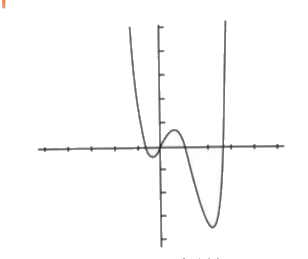
The number of zeroes of p(x) is :A3B4C5D6
What are the number of zeroes of p(x) for the given graph?
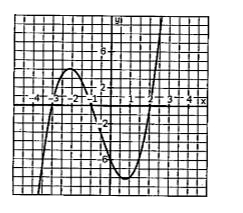 View Solution
View SolutionIn the figure, the graph of the polynomial p(x) is given. The number of zeroes 'of the polynomial is:
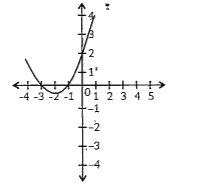 View Solution
View SolutionDraw the graph of polynomial p(x)=x2−7x+12, then find its zeroes from the graph.
View SolutionA) Draw the graph of the polynomial p(x)=x2−5x+4 on the graph per zeroes from the graph.
View SolutionCalculate the number of zeroes for the graph of a polynomial p(x) as shown below:
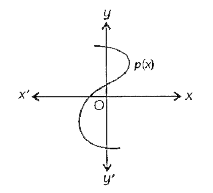 View Solution
View Solution


